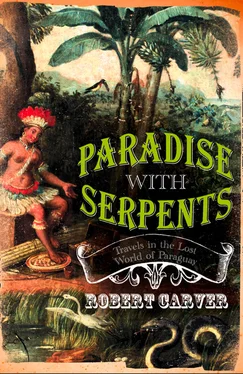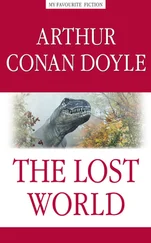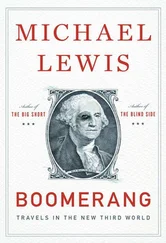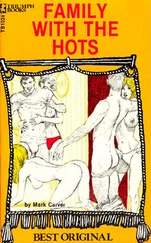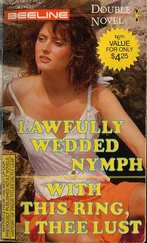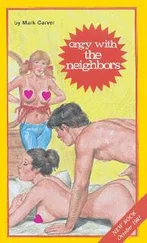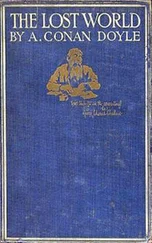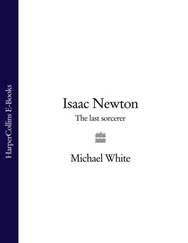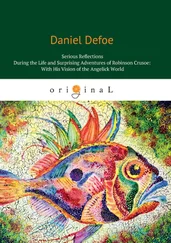The old pattern repeated itself. At first, regular letters were received by the family at home in England – then silence, nothing. A long, an overlong silence. Enquiries began to be made by anxious relatives and the British Embassy in Asunción was stirred into action. There was no news. Once again, Charlie Carver had simply vanished into the blue. This time, though, there was to be no miracle, no reprieve. The last people who had seen Charlie and his American partner alive were a small group of Spanish Catholic missionaries, working with Indians only just contacted by whites, on the very edge of known territory. The two explorers had stayed with the priests for several days before departing for the interior, into a region no whites were thought to have ever penetrated before. The smoke of their camp fires had been seen in the distance, coiling up into the sky for several days – then nothing. Some six months later, newly contacted semi-Christianized Indians appeared at the mission with several objects of European manufacture, shreds of cloth, buttons, and a smashed gold-plated, full-hunter pocket watch – manufactured in New York, with Charlie Carver’s name engraved inside it, together with his family address in England. It was all that remained of the expedition. Somewhere in the interior the two men had been killed by hostile Indians. The Indians who brought in the pathetic remains did not even know the tribe which had carried out the attack – they had traded the objects with another tribe, who had had them from yet another. The watch was returned to England, and was even repaired. My grandfather Roy showed it to me when I was a young boy, flicking open the front to show me Charlie’s name engraved in Victorian copperplate script. It still had many dents and bruises on its shell which no amount of repair could ever redress. Somewhere in the jungle the remains of Charlie Carver and his partner lay for ever lost to the outside world. Like so many Europeans they had searched for treasure in America only to find death.
That, too, should have been the end of the story. But it wasn’t quite. Colonel Fawcett, the rejected candidate, got a job as a boundary surveyor in South America, and after his experiences there returned again and again to try to find the lost city of gold and silver, until he too lost his life in the attempt. But before he died he told his great friend the author Sir Arthur Conan Doyle about his theories, about a lost Atlantis in the jungle, Phoenician traders on the River Amazon, about the lost city of Paititi, and about Charlie Carver and his expedition. This information, as we shall eventually see, Conan Doyle eventually put to very good use.
After my book on Albania had been published the distinguished author and former Times foreign correspondent Peter Hopkirk, who had been instrumental in getting my first book published, asked me ‘Where are you going next? You can go anywhere now, you know.’ I replied that I was going to go to Paraguay. ‘Why?’ I explained to him about my great-great-grand-uncle Charlie Carver. ‘To do an “in-the-footsteps-of” book, then?’ he asked skeptically. ‘The trail will be a bit cold after, what, a hundred years.’ No, I replied, not at all. I had no interest in ‘in-the-footsteps-of’ travel books. Besides, Charlie’s footsteps were only too well known – he walked into virgin jungle and was killed by Indians, end of story. What I was interested in were the half-made, half-abandoned places in the world, like Albania and Paraguay – and one could see Paraguay as a sort of South American Albania – lawless, piratical, bandit-ridden and corrupt, where neither tourists nor travel writers usually penetrated. And there was something else. South America had attracted the Spanish and countless other European adventurers who hoped to make their fortunes out of the river of silver and gold that had flowed, at such cost in human misery and suffering, after the Conquest. Yet quite another vision of America had also seized the imagination of the European mind. America could become a place of redemption, a place where the human spirit could be reborn, remade and refined. From its first discovery America had been a realm where imaginary Utopias could be set, and a place European dreamers could actually set sail for, arrive in and set up ideal communities which would, it was hoped, become beacons to mankind. Paraguay, from the first, had been a place which attracted Utopians and idealists. First the Jesuits had experimented with their Reducciones , theocratic communities of Christianized Indians ordered by a multinational caste of Jesuit priests; later 19th-century German nationalists, fin de siècle Australian communists, Mennonites, Moonies, and even renegade Nazis had all tried to set up their colonies in Paraguay. You could make a case that what New England was to Cotton Mather – a place where the exiled English Puritans could attempt to build the City Upon a Hill, which would be a light to lighten the gentiles – so was Paraguay the South American equivalent. In a strange sense the bifurcation of the human mind was reflected in the European’s Manichean obsession with America – a place from which to loot and steal gold and silver, to pillage, rape and plunder, and a place to found ideal communities which would redeem mankind, straighten the crooked timber of humanity, and to build the Perfect City.
Both Charlie Carver and I were heirs to this dual, paradoxical, contradictory tradition, for we were both descended, after all, from John Carver, a Puritan gentleman from the English Midlands who in 1620 procured a vessel in Holland that was renamed the Mayflower , and who was then elected Master of the company of Pilgrims for the voyage, and on arrival in New England was elected first Governor of Plymouth Colony, Massachusetts. Though the English settlement eventually prospered, the first Governor did not. He was shot with an arrow by an Indian while out ploughing the land and died of his wound, leaving behind his wife and children, and his brother who had accompanied him on the Atlantic crossing, one Robert Carver. His descendant, Jonathan Carver, a captain in the Massachusetts Militia, had taken the Union flag of Great Britain to its furthest point west in the years immediately before the Revolution of 1776. He had been the first anglophone to overwinter with the Lakota Sioux, had made detailed plans to cross the Rockies and reach the Pacific coast, and whose travel book – published in London on his return – had proved a sensation all over Europe, translated into at least seven languages. He became a figure in literary London and at Court, and never returned to America. He was a disciple of the French philosophes , and in his tolerant appreciation of Indian culture and moeurs was a century and a half ahead of his time. Our family, I argued, had made a habit of going to America on quests – mine would be in the tradition.
I explained all this over several cups of cappuccino in a London coffee bar to Peter Hopkirk. He thought about it and gave a slight smile of approval. ‘It does sound like an interesting quest. But remember, two Carvers have already been killed by American Indian arrows. Just make absolutely sure you are not the third. Always remember, you can’t write a book if you are killed while researching it. Jonathan Carver is clearly the one to emulate. Steer well clear of silver mines, I should.’ This was very good advice, and I often thought about it later when I found myself in much hotter water than I would ever have thought it possible to get into – and then get out of alive.
Two
An Ambassador is Born
At Sao Paulo airport the passengers in the transit lounge slumped forward like the dead, eyes shut, their heads resting downwards, caught in metal and canvas cradles, motionless, their arms hanging limply beside them. Above, around, and all over them hovered lean, lithe, intense young girls dressed in white t-shirts and jeans, with bare suntanned midriffs, their fingers, fists and elbows kneading their clients’ skulls, backs, shoulders, torsos and feet. This service, unlocking flight-tautened muscles and imparting spiritual calm, cost five US dollars, and took place in full view of everyone; a whole line of these modern penitents were slumped as if in prayer between the coffee stall and the newspaper stand. The newspapers and magazines on sale were all from the Americas – from all over Brazil, Argentina, Uruguay, Peru, Bolivia and Venezuela, as well as Mexico and the US. There was nothing from Europe – and nothing, of course, from Paraguay: sometimes known optimistically as the Switzerland of the continent, it was more like the Tibet. You could get no information on the place anywhere. I was in a new continent, a new hemisphere, and a New World – and one in which my destination was as invisible as it had been in England.
Читать дальше
